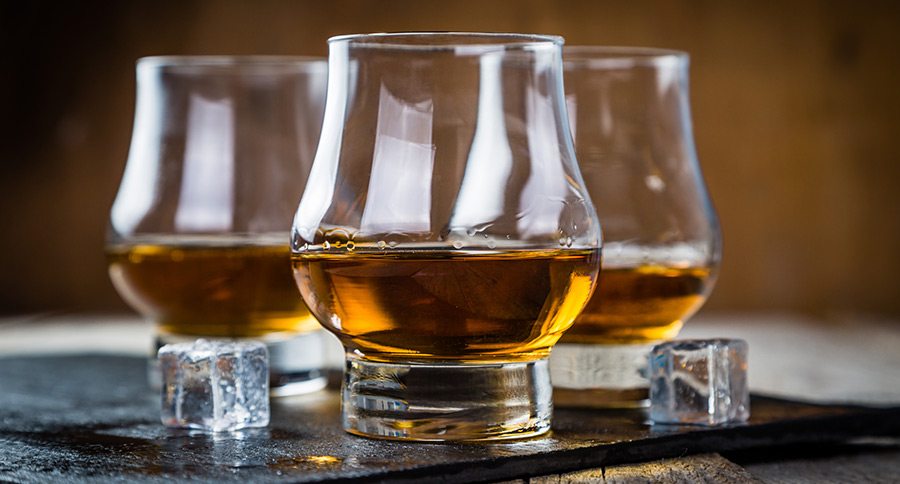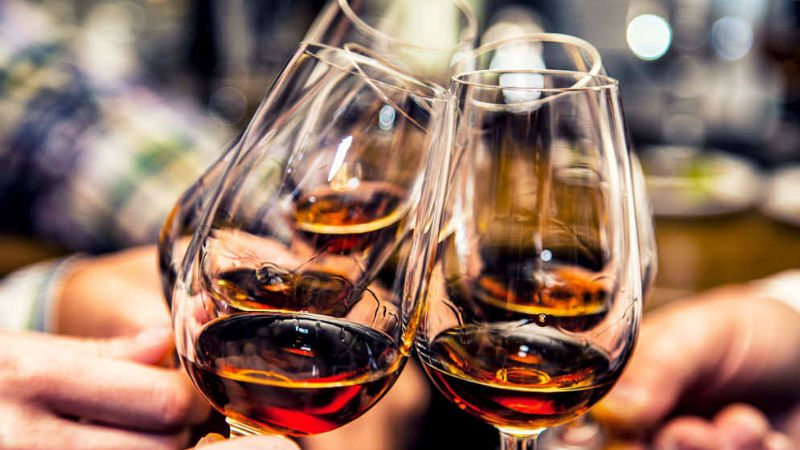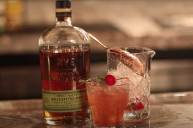Tasting whiskey is not as complicated as you may have thought. It's actually pretty simple, and will increase your enjoyment of this fine spirit. Here's how to do it.
Whiskey - or whisky if you're from Scotland - is, in my humble opinion, one of life's simple pleasures. The aromas, tastes, and sensory sensations associated with a good whiskey are many and varied, and no two whiskies are the same.
For me, whiskey and bourbon, like fine culinary efforts, add another layer of appreciation for what human beings can accomplish with the simplest of ingredients.
Well-made spirits, like good beer and good food, are, in essence, an ode to human creativity and are part of what elevates life and makes it more enjoyable.
Tasting bourbon or whiskey is a part of that elevated experience.
But tasting whiskey, like tasting coffee or wine or anything for that matter, certainly doesn't have to be complicated. Of course tasting can be as complicated as you like, and there are many additional small tangents to the process that I'm purposefully leaving out. For our purposes, simpler is better.
Tasting is a very uniquely personal experience - just as no two whiskies are the same, no two people will have exactly the same experience tasting whiskey.
But there are a few simple time-tested steps to properly tasting a whiskey that will make the experience more memorable and will help you define the character of the spirit.
1. The glass you use is important.
Whiskey tasting can, of course, be done with any glass, but a proper whiskey nosing glass will greatly help you define the character of what it is you're smelling and tasting.
A nosing glass concentrates the aromas the whiskey gives off. You can also use a tulip-shaped wine glass.
2. Pour only a couple of ounces into the glass.
Tilt the glass and notice the color of the whiskey in the light. Appreciate its beauty. Tilt the glass at a 45 degree angle and turn it - or lightly swirl the whiskey - to coat the inside of the glass.
Notice how the whiskey develops tear drops or legs as it slides back down into the glass. The thickness and speed at which these tears flow down the glass give you an idea of the spirit's viscosity, its alcohol content, and even whether or not the whiskey is "full" or rich in components like oils, esters, and other things that make whiskey whiskey.
These steps of viewing the whiskey, looking at and appreciating the color, and examining the viscosity of the drink, are really designed to prepare your brain for the smelling and tasting part. It sets up subconscious expectations and makes the overall experience richer.
3. Bring the glass to your nose.
Don't be shy - stick your nose right in the glass. Inhale and get an initial impression. What do you smell? Try to define that impression in general terms.
Do it again; stick your nose in the glass and sniff. Do you smell any additional or different aromas this time? Do it a third time.
Try to describe the aromas you smelled in increasingly more specific terms. Perhaps in your first sniff you smelled smokiness or sweetness. In your second sniff maybe you picked up a little oaky or grassy character. Finally, your third sniff may have hinted at dried fruit or leather. It's all very personal and there is no right or wrong. It's entirely up to you.
And don't be dismayed if you have a hard time describing what you're smelling. You will definitely improve the more you do it. You can develop your nose and your palate just like you can develop your muscles, by giving them regular workouts.
Take your time tasting other things - food and drink - and try to remember the aromas and flavors of those things. Your memory will combine with your nose and palate to enable you to more thoroughly and specifically describe the sensations you get when tasting a whiskey.
4. Taste!
This is where the rubber meets the road, or the tongue meets the whiskey (i.e. the fun part). Take a sip and "chew" it for several seconds. Let the whiskey coat the entire inside of your mouth. Do the same thing you did with your nose: try to describe the flavors and sensations you get from the spirit. Swallow.
How does the whiskey taste in your mouth and while going down? Do your taste buds confirm or conflict with what your nose picked up? Perhaps you smelled hints of tobacco when nosing the whiskey, but now that you've tasted it maybe that tobacco has been further defined to remind you of a good maduro cigar you once had. Or, heaven forbid, maybe that taste is not good at all, and it reminds you of a stale cigar you got at the county fair when you were younger.
That sense of discovery is part of what makes tasting whiskey an adventure.
The real key to this process is to simply take your time, think about what you're doing as you do it, and most importantly of all, enjoy it.
I scoured the internet to try to find a good, succinct video that conveys what I've tried to tell you here. This one, by Gerry Tosh of Highland Park Whisky, does a wonderful job of simplifying the whiskey tasting process and explaining it in terms everyone can understand and appreciate:
https://youtu.be/Boj33DVSILQ
Like what you see here? You can read more great articles by David Smith at his facebook page, Stumpjack Outdoors.
NEXT: How to Make Smoked Trout: It's Easy!
WATCH









